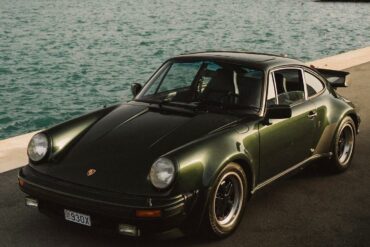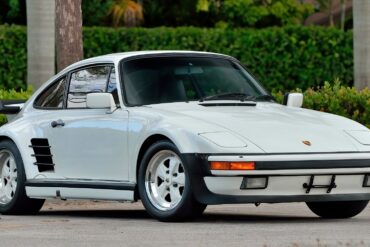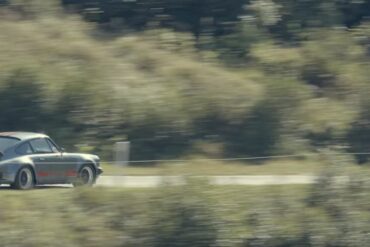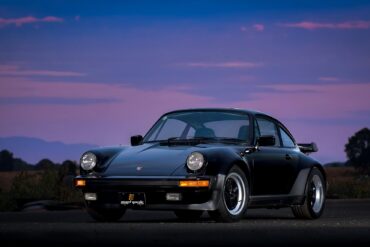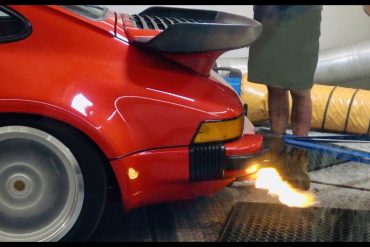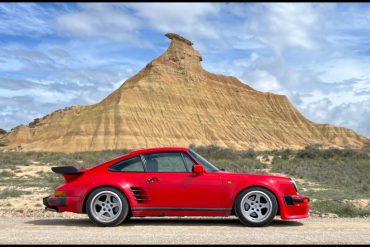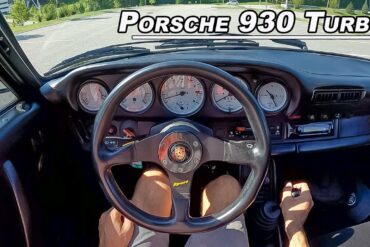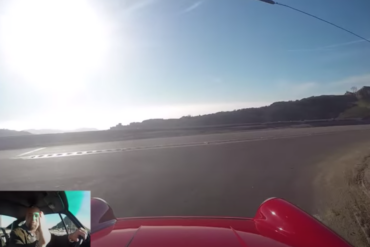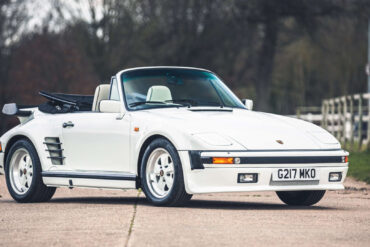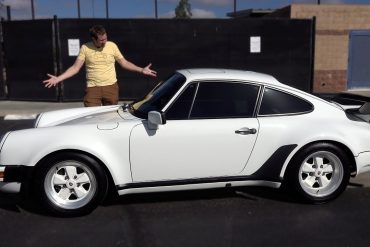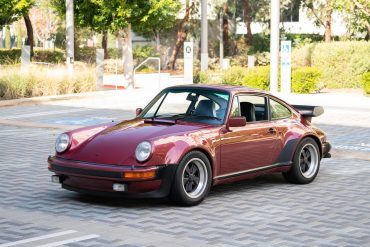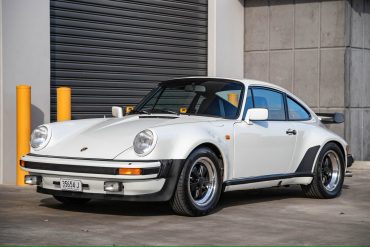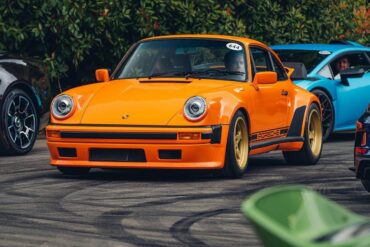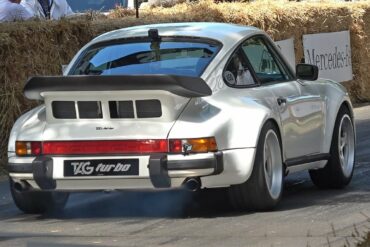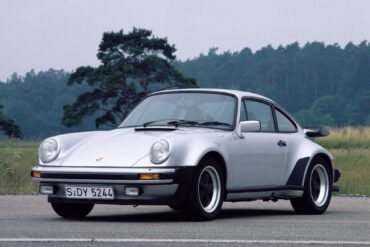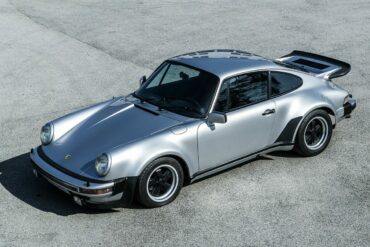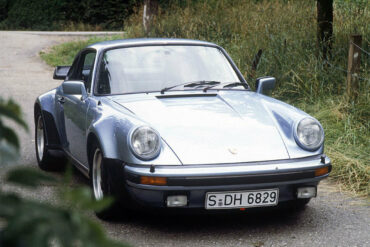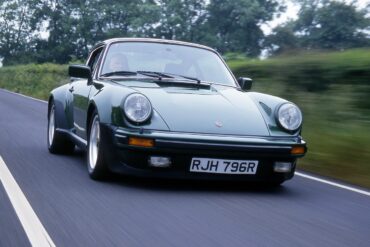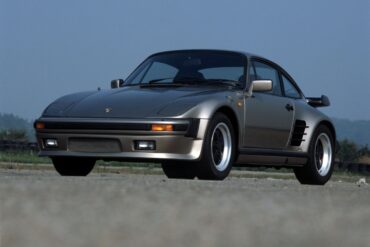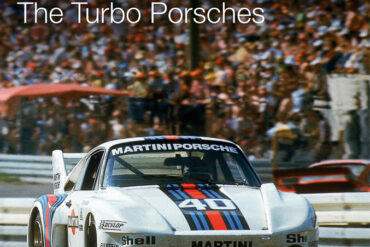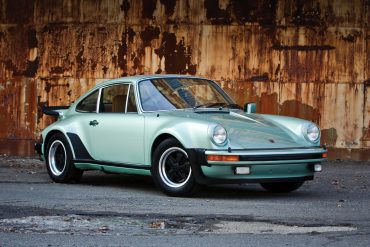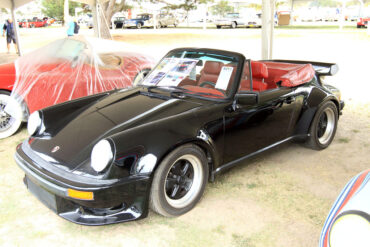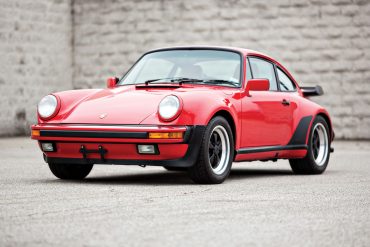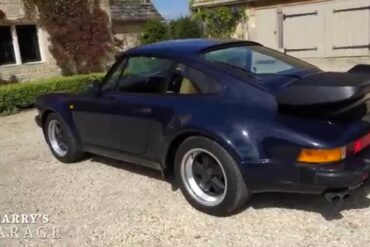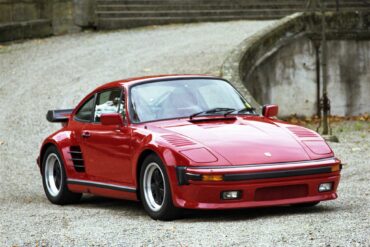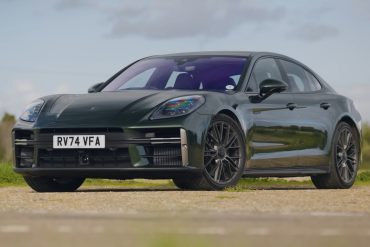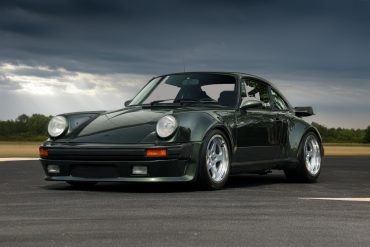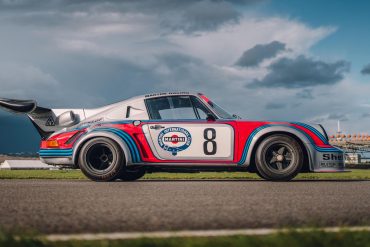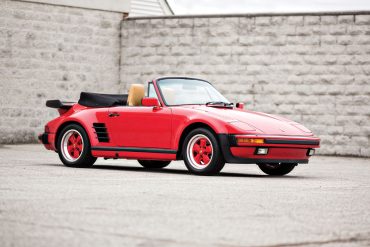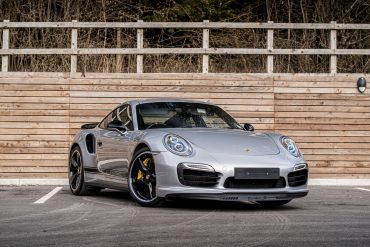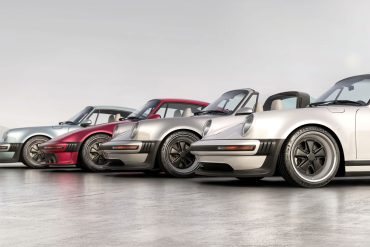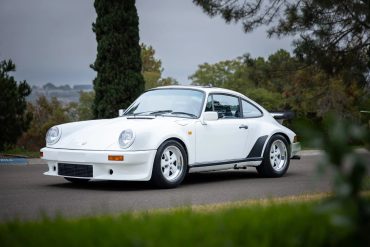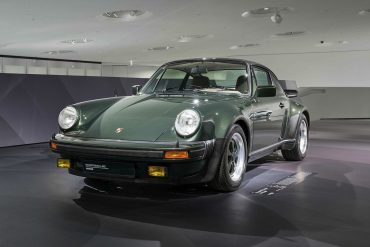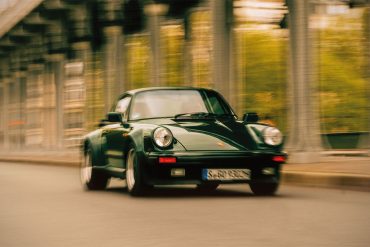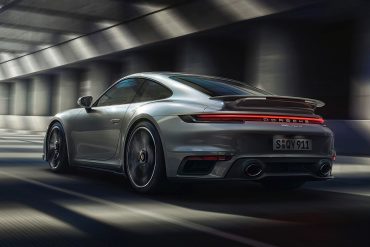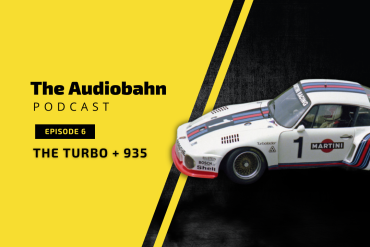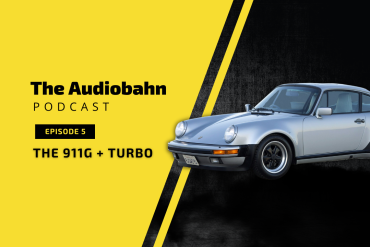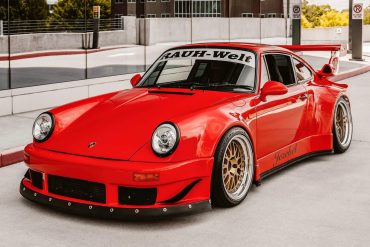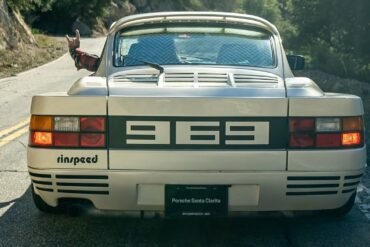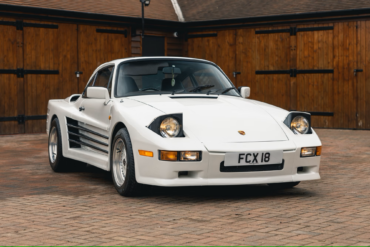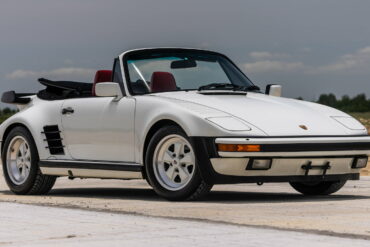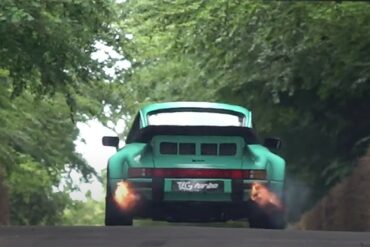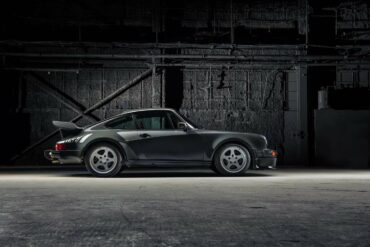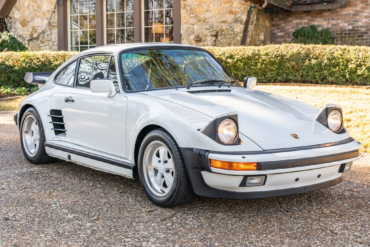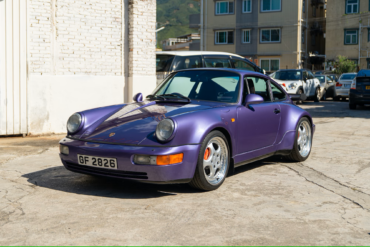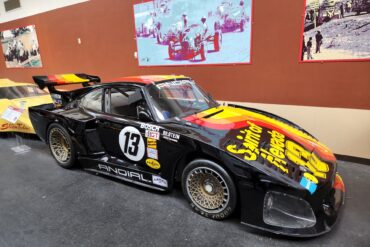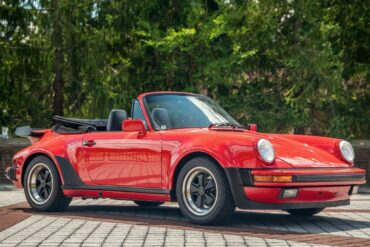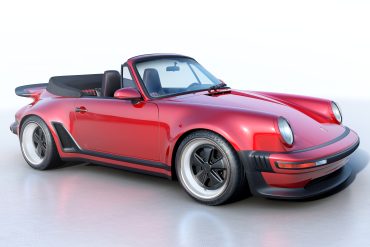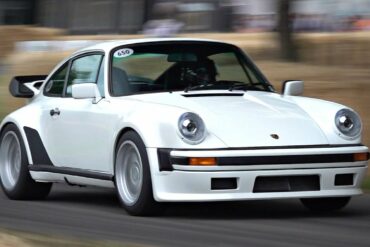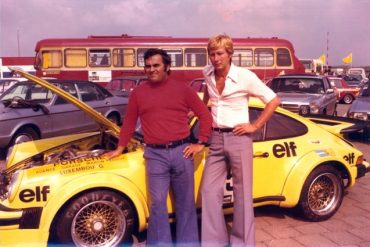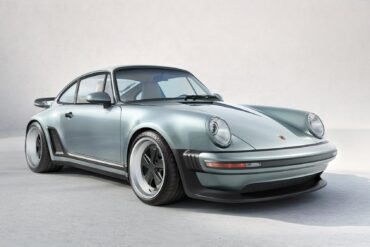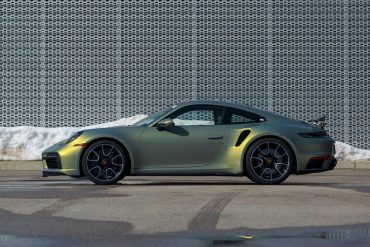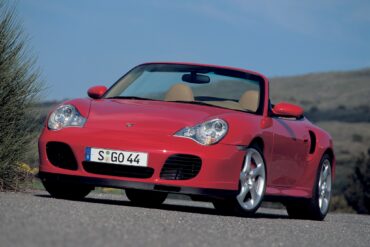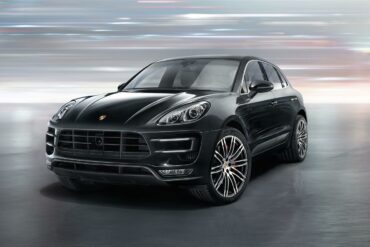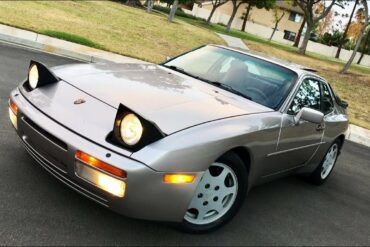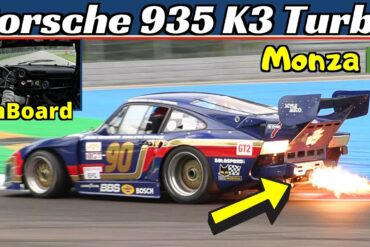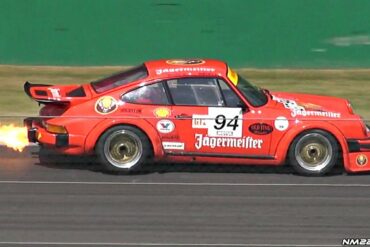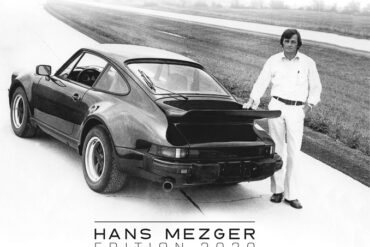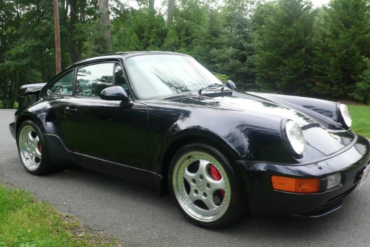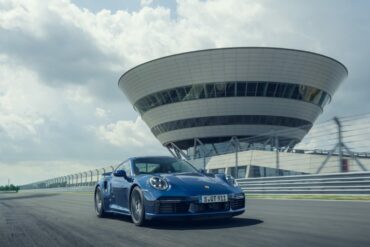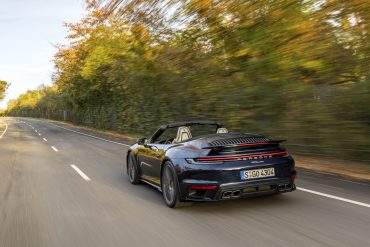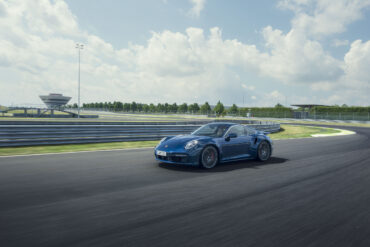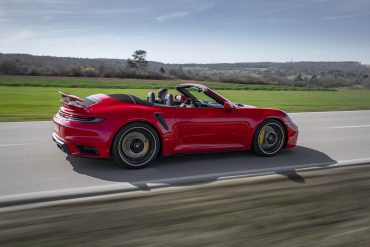In the world of automotive enthusiasts, the fusion of history, engineering, and art often leads to extraordinary creations. One such...
326 results for
930 Turbo
In a head-to-head competition presented by carwow, two classic cars, the 1986 Porsche 930 Turbo and the 1992 Dodge Viper,...
When Magnus Walker was invited to Fjord Lift event in Norway he quickly took the chance to drive a remarkable...
At the 2023 Werks Reunion in Monterey, California, Porsche Santa Clarita debuted a reinterpretation of the 1988 Porsche 930 Turbo...
In the distinguished circles of Porsche enthusiasts, Magnus Walker’s 1977 Porsche 930 Turbo Carrera holds an esteemed position. This automotive...
The 930 Turbo with its 3.0 L turbocharged flat 6 was the fastest production car in the world at the...
Saturday, January 14th, 2023, Mecum Auctions will be offering a 1988 PORSCHE 930 TURBO with the iconic slant nose option....
Our friends from PCarMarket is currently offering this 1985 Porsche 930 Turbo Slant Nose “Special Wishes” for sale with approximately...
Want to hear the powerful sounds that a Porsche 930 Turbo makes as it runs on the Great St. Bernard...
The turbocharged 930 was produced from early 1975 was Porsche’s flagship 911 and arguably the most capable supercar of its...
Cracking car and history After the trip to Spain, Harry’s tweaked ‘Sonderwunsch’ Porsche 930 Turbo S was fully run in...
The Porsche 930 makes for a great GT and Harry took his very own special turbo S version on a...
These Are The Videos you Should Watch to End Your Week We’ve decided to do a video roundup series of...
Porsche 930 Turbo – One of the Greats Remember that episode where Damian mistakenly bought a broken Porsche 911 from...
Modified Slant Nose Turbo (930) On Road The 930 Turbo being reviewed in the great POV video. Nice footage and a good...
Porsche 930 Turbo on the Great St. Bernard Mountain Pass The 930 Turbo on the Great St. Bernard Mountain Pass...
“We’ve had Porsches in our family for decades…my father had a billion of them, I think,” says Deryck Shakespeare. “But...
A Legendary Car “We’ve had Porsches in our family for decades…my father’s had a billion of them, I think,” says...
Porsche 930 Turbo – One Take Matt tests a modified Porsche 930 Turbo making 150 hp more than stock! The...
Just 50 ‘C16’ cars were manufactured for the UK-market, initially equipped with an uprated engine of 330bhp (from 300) mated to a 4-speed transmission. However, at the end of 1988, the uprated 5-Speed G50 gearbox was introduced, dramatically easing the peaks in power delivery by reducing the effects of ‘turbo-lag’. The factory SE also benefited from a dual-exit exhaust system, limited-slip differential, heated front seats and a sunroof.
The development of the Porsche 911 was significantly influenced by the factory’s racing program. The FIA Group 4 homologation rules...
Introduced in 1963, the Porsche 911 was initially designed as a lightweight, low-power finesse car. However, in 1975, Porsche launched...
Porsche introduced the 930 Turbo in 1975, pairing a KKK turbocharger with the 3.0-liter Carrera RSR engine in road trim,...
The 930 was the most capable supercar of its time and catapulted Porsche’s brand worldwide, keeping up with the likes...
1983 Porsche 930 TAG-Turbo From 1984 to 1987, Porsche built a 1.5-liter twin-turbocharged V6, branded as the TAG-Porsche TTE P01,...
Enjoy this video of the Porsche 930 TAG Turbo by Lanzante at the Goodwood Festival of Speed....
1.5-litre V6 Turbo Sound! I can’t hide the fact that this special Porsche 930 Turbo is one of my favorite...
Porsche made its first and most significant changes to the 930 for 1978 model year, enlarging the engine bore by 2 mm (0.08 in) to a total displacement of 3,299 cc (3.3 L; 201.3 cu in) and adding an air-to-air intercooler. The suspension benefitted from new anti-roll bars, firmer shocks and larger diameter rear torsion bars. While the increase in displacement increased power output and torque, it also increased the weight of the vehicle, which contributed to a substantial change in the handling and character of the car compared to the Earlier 3.0-Litre Models.
The 911 Turbo was put into production in 1975. While the original purpose of the 911 Turbo was to gain homologation for the 1976 racing season, it quickly became popular among car enthusiasts. Ernst Fuhrmann adapted the turbo-technology originally developed for the 917/30 CAN-AM car and applied it to the 3.0 litre flat-six used in the Carrera RS 3.0, thus creating what Porsche internally dubbed as the 930. Total power output from the engine was 260 bhp and 254 ft lbs of torque.
1978 – 1989 Porsche 911 Turbo 3.3 (930) Technical Specifications Number of cylinders Boxer 6 Engine Code 930/60/66 Fuel type...
1975 -1977 Porsche 911 Turbo 3.0 (930) Technical Specifications Type Series Production Car Production Years 1974 – 1979 Built At...
1981-1989 Porsche 911 Turbo 3.3 SE ‘Flachbau’ Pictures & Gallery ...
Porsche 930 to 935: The Turbo Porsches – by John Starkey © Veloce Publishing Ltd Much has been written about...
Porsche 911 Turbo (930) The 930 Turbo on one of the greatest roads in the world. A short video, but...
Only 50 units made. The 911 Turbo Limited Edition comes equipped with the 330 bhp power unit normally only available in the 911 Turbo with Sport Equipment. In addition, the fitment of a limited slip differential as standard ensures the the increased engine performance can be used to it’s fullest extent. This Limited Edition also adopts the rear wheel air intakes of the Sport Equipment version. Essentially an SE without a slantnose front.
(1975 – 1977) Porsche 911 Turbo 3.0 Pictures & Gallery...
1987 – 1989 Porsche 911 Turbo 3.3 Cabriolet (930) Pictures & Gallery...
1978 – 1989 Porsche 911 Turbo 3.3 Coupe (930) Pictures & Gallery ...
A Legend Reviews A Legendary Car...
Slantnosed and based on that of the 935 racecars, with pop-up headlamps. The front spoiler was made deeper in order to accommodate the extra oil cooler, while intakes in the rear wings fed air to the brakes. The larger turbocharger and four-outlet exhaust gave 30bhp of extra power. Porsche began their “special order program” offering a Flachbau option (Slantnose) for the 930 in very limited production. All of this at a cost of nearly 2 times the standard 930S.
Story by Greg James. Photos by Dan O’Connell. I love reading road tests. Especially those that involve shootouts when cars...
The Porsche Turbo story began 50 years ago, in 1974, when Porsche introduced the first 911 Turbo (internally known as...
The new Porsche Panamera has arrived, offering a sleek, four-door sports saloon that’s both fast and loaded with cutting-edge technology,...
Everyone who has experienced Porsche turbo technology has their own very personal story. Here, renowned racing drivers and engineers tell...
Some colors suit an era of 911 so well they become synonymous with that car. Oak Green Metallic is one...
Incredibly successful in Le Mans Porsche was incredibly successful with the 917 in Le Mans and in the World Championship...
One of the rarest Porsche 930 models was the hand-built 505-option ‘Flachbau’ or slant nose. This special-order Porsche package was...
When Porsche unveiled the world’s first production sports car with a turbo engine in 1974, the automotive world changed overnight....
The 991 Turbo S Exclusive GB Edition was created to commemorate the 40th anniversary of the 911 Turbo and was...
Singer highlighted the extent of its collaboration with owners through a Family Portrait showing four Porsche 911s reimagined to reflect...
This 1982 Porsche 911 Turbo was reportedly converted to BTR Lightweight specifications when new. RUF stripped the car to reduce...
The new “Beyond Performance. 50 years of Porsche Turbo” special exhibition at the Porsche Museum is officially open. Over the...
Singer’s latest creation celebrates the iconic Porsche 911 by turbocharging it and basing it on the 930 Turbo from the...
The 1974 world premiere of the 911 Turbo at the Paris Motor Show caused a sensation. Half a century later,...
The invention of the Targa body style and the introduction of the turbocharger for production cars are two key moments...
The legendary Porsche 911 Turbo story began with the Type 930 in 1975. It delivered thrilling performance, but its handling...
A visit to Porsche at the Retro Classics in Stuttgart is always a journey through time. This year, the sports...
This 1988 Porsche 911 Turbo underwent a custom Carrera RSR-style restoration with backdated bodywork including a classic long-hood nose section,...
For almost 50 years, the Turbo models have enjoyed an exalted position at Porsche. They stand for a distinctively high...
The Audiobahn E6: The Porsche 911 Turbo & The 935 Welcome to The Audiobahn, the Stuttcars.com podcast focused on all things...
The Audiobahn E5: The Porsche 911 G Series (& the Turbo) Welcome to The Audiobahn, the Stuttcars.com podcast focused on all...
This is the seventh RWB creation, known as “Jezebel.” This remarkable 1989 Porsche 911 Turbo has undergone a remarkable transformation,...
The 2022 Porsche 911 Turbo S Cabriolet is a formidable beast. The new Turbo S comes with an all-new, 3.8...
In Magnus Walker’s newest video, he gets to drive a 1982 930 Slantnose Turbo by DP Motorsport formerly owned infamous...
Harry’s Garage, drove his Porsche 930S to Goodwood on setup day and as incredibly lucky. He got a closer look...
You have to agree with me that the Porsche 911 Turbo has been a masterpiece straight from the start, you...
The Rinspeed Porsche R69 Turbo, aka Porsche Testarossa, was a limited production car from Switzerland. It is believed that around...
The Rinspeed Porsche R69 Turbo, aka Porsche Testarossa, was a limited production car from Switzerland. It is believed that around...
The 1989/90 change of model year saw the launch of the Porsche 911, 964 series onto the market. This 911...
Live now on Mecum Auctions is perhaps one of the most popular Porsches of the 1980s, a beautiful 1987 Porsche...
Who Wants A Street-Legal F1 Engined Porsche? We recently took a look at the TAG-Turbo 911 (Powered by Lanzante) and today...
Porsche TAG-Turbo Lanzante Porsche 930 TAG-Turbo. During the 80s, Porsche was supplying 1.5L turbocharged V6 engines to McLaren F1 team...
If you head over to Bring A Trailer now, you’ll have the chance to acquire one of the reported 33...
At the Geneva Motor Show in March 1992, the 3.3-litre 964 Turbo S was unveiled sporting air inlet vents in...
Sports car racing went through some turbulent times in the early 1970’s. At the start (1970) the world championship was...
Bid to get the chance to acquire a 1987 Porsche 911 Turbo Coupe at auction with Bring a Trailer! With...
The turbocharged 930 was produced from early 1975 was Porsche’s flagship 911 and arguably the most capable supercar of its time....
California-based luxury specialist Singer just released their first reimagined Porsche 911 (Type 964) Cabriolet. After getting some requests from owners,...
The Porsche 930 Turbo might not be as valuable or coveted as the early Porsche 911, but recently a special...
$1.45M Porsche 930 with Formula 1 Engine by Lanzante This is Lanzante’s Porsche 930 TAG Turbo and its limited to...
I just love the Porsche 930 Turbo built between 1978 and 1989, with her massive rear ‘whale tale’ wing and...
There are 934s, and there are 934s… The Porsche 934 has long lived in the shadow of its more powerful...
Personally, I just love the Porsche 930 Turbo, especially the 3.3-Liter version made between 1978 and 1989, with nearly 19,000...
The Porsche 911 Turbo S is one of the best supercars on the market today. Understandably, it does not come...
Introducing this new top-of-the-range model, Porsche is once again placing a 911 Turbo Cabriolet right at the top of the family after a break of 14 years: From 1987 - 1989 the Porsche 930, as the first Turbo was code-named within the Company, set the first milestone in the history of these outstanding open-air sports cars. With cylinders still featuring two valves each at the time, the 3.3-litre power unit driving the first Turbo Cabriolet offered maximum output quite unique at the time of 300 bhp or 221 kW. Acceleration from 0 to 100 km/h was in 5.2 seconds and the car had a top speed of 260 km/h or 161 mph.
The Porsche factory had 93 Turbo chassis left. These were all transferred to Porsche Exclusiv and hand built as the very special 964 Turbo 3.6 S. They were offered with normal, or ‘Flachbau’ slant nose front ends. While the vast majority of Turbo S’ were fitted with the ‘Flachbau’ nose as a no-cost option, the Turbo S could also be had with the traditional 964 nose as well. In all, 76 Flatnose cars were made while 17 non-Flatnose (known as Package option) cars were made. These cars were also fitted with the X88 option, which increased power to 380 hp. 75 flatnose units were produced.
The top model in the Porsche Macan lineup is the Macan Turbo. It launched in 2016 as the most powerful vehicle in the competitive compact SUV segment and its 3.6 liter twin-turbo V6 engine is a real gem. Good for 395 bhp @ 6000 rpm and torque of 406 ft lbs @ 1350 rpm, it helps the Macan Turbo accelerate from 0 to 60 mph in just 4.50 seconds (with the Sport Chrono package fitted) on its way to a top speed of 165 mph.
1988 Porsche 944 Turbo S – One Take This 1988 Porsche 944 Turbo S (also referred to as 951) is...
Porsche 935 Turbo Monster + Onboard I had the pleasure of filming this amazing Porsche 935 k3 Kremer Gr.5 during...
1976 Porsche 934 Turbo RSR Sound – Warm Up, Accelerations & HUGE Flames!! During an Historic racing weekend at Monza...
Porsche 911 Turbo Air Cooled Years 1975 – 1998 / Hans Mezger Edition 2020 by Andreas Gabriel, Thomas Nehlert and...
19 non 'slant nose' or Package cars were made for the USA only. Very rare. The Porsche factory had 93 Turbo chassis left. These were all transferred to Porsche Exclusiv and hand built as the very special 964 Turbo 3.6 S. They were offered with normal, or ‘Flachbau’ slant nose front ends. While the vast majority of Turbo S’ were fitted with the ‘Flachbau’ nose as a no-cost option, the Turbo S could also be had with the traditional 964 nose as well. In all, 76 Flatnose cars were made while 17 non-Flatnose (known as Package option) cars were made. These cars were also fitted with the X88 option, which increased power to 380 hp.
Inspiration for this feature came from the post published by Porsche in December 2020. It covers the seven generations of...
Porsche 911 Turbo (992) Earlier this year, Porsche revealed and released the 2021 model year Type 992 911 Turbo S,...
Porsche mania seems to be taking over at the moment, mostly because the 2020 Type 992 911 Turbo S has...
Engine based on modified 3.6 litre 964 unit. Speedline wheels with big red brake calipers. Lessons learned in the Carrera Cup series proved the reliability of the new 3.6-litre engine. An additional three millimetres on the bore and two millimetres on the stroke, resulted in an increase in capacity of 300 cc. Combined with the turbo optimised cylinders, pistons and crank train, and an increase in the compression ratio from 7.0 to 7.5:1, this helped to boost power to 360 bhp. Torque was increased significantly to 520 Nm at 4200 rpm, up from 450 Nm at 4500 rpm in the earlier car.
All Porsche 911s are turbocharged these days but the Turbo model is something special. It gets the twin-turbo 3.7-liter flat six with tons of power and a huge $33,000 savings over the Turbo S. Thanks to an output of 573 hp, marking an increase of 32 hp over the predecessor, the new 911 Turbo Cabriolet accelerates from 0 to 60 mph in 2.8 seconds (0.2 seconds faster than before). The Turbo Cabriolet basically handles like a coupe.
It would be a disservice to call this new Turbo a "lesser" car than the Turbo S, but it does have less in most departments. Less power at 573 HP. Less features compared to the jam-packed Turbo S. Most importantly, less money required to put one in your garage. This also is not to say that the new Turbo isn't anything short of a monster. It will still go 0 to 60 in 2.8 seconds, will corner like it was on rails with Porsche Torque Management (PTM) all-wheel-drive.
The 2022 Porsche 911 Turbo S Cabriolet is a formidable beast. The new Turbo S comes with an all-new, 3.8 liter boxer six with two variable turbine geometry (VTG) turbochargers. The power output is a staggering 640 hp and 590 lbs-ft of torque. In keeping with previous Turbo models, the engine powers all four wheels. A new 8 speed automatic transmission with a manual mode manages the power, and can power the car to 60 mph in a hair under a claimed 2.7 seconds.







